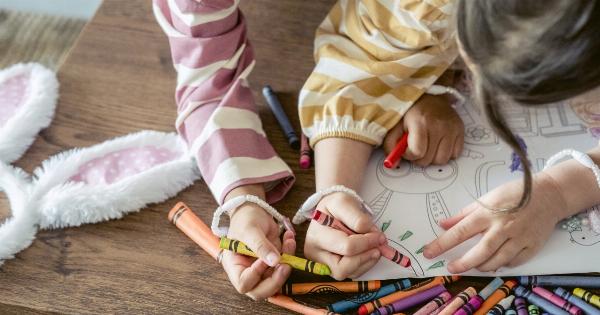Easter is an important holiday in the Christian faith, and as such, it’s essential to teach children about the Easter story. As a parent, teacher, or caregiver, it can be challenging to decide how to approach this topic with young children.
Here are some tips for teaching the Easter story to young children.
Use Simple Language
When discussing the Easter story, it’s essential to use language that is easy for children to understand. Avoid using overly complicated or technical language that might confuse young children.
Use relatable examples or simply descriptions to help children make sense of the story.
Read Aloud
Reading aloud helps children to visualize and remember the story. Reading together as a family or in a classroom setting can create a sense of community and make the story more memorable.
Use a children’s Bible or a simple retelling of the Easter story to keep children engaged.
Visual Aids
Using visual aids such as pictures or videos can help children to better understand the Easter story. Utilize age-appropriate resources to help bring the story to life visually.
Incorporate crafts or coloring activities that correspond with the lesson to help reinforce the concepts.
Engage in Discussions
Young children learn through interaction, so it’s essential to engage in discussions with them about the Easter story. Ask questions that encourage children to think about the meaning of the story and how it applies to their lives.
Allow children to share their thoughts and feelings about the story.
Focus on the Meaning of Easter
Teaching the Easter story is not all about the crucifixion and resurrection of Jesus. It’s important to emphasize the meaning of the holiday beyond the historical events.
Highlight the themes of sacrifice, love, forgiveness, and renewal to help children understand the significance of Easter in their lives.
Break Down the Story into Manageable Parts
The Easter story can be overwhelming for young children. Break the story down into manageable parts that children can understand. Focus on the key events and concepts that are important for children to comprehend at their age level.
Make it Fun!
Teaching the Easter story doesn’t have to be dull or boring. Use games, songs, or other creative activities to make the lesson fun and engaging.
Children will be more likely to remember what they’ve learned if they had a good time learning it.
Encourage Reflection and Action
Encourage children to reflect upon the Easter story and how it applies to their lives. Ask them what they learned or what they would like to do to honor the sacrifice that Jesus made for them.
Plan activities or service projects that help children put their faith into action.
Be Respectful of Different Beliefs
As you teach the Easter story, remember to be respectful of different beliefs and backgrounds. Not all children may come from the same religious background, so it’s important to be sensitive to this and tailor the lesson accordingly.
Lead by Example
Finally, remember that children learn from what they see and not just from what they hear. Be a positive role model and lead by example.
Demonstrate the values and concepts of the Easter story in your everyday life, and children will be more likely to apply them to their own lives.




























